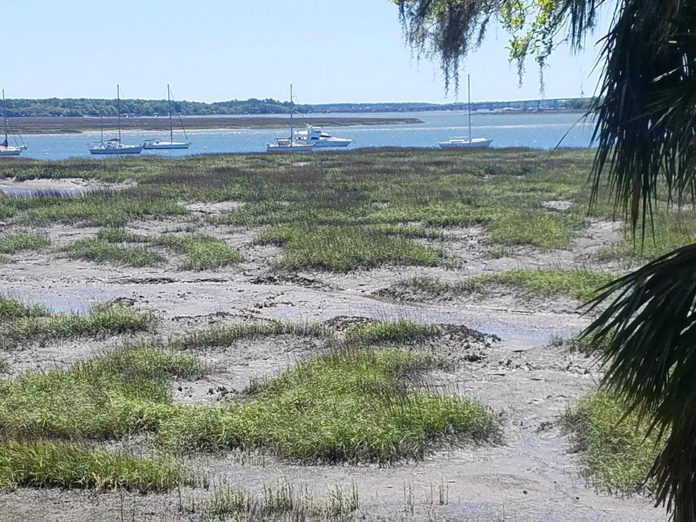The Chowan Creek bridge that links Lady’s Island and St. Helena Island is a landmark to me. First, it was the spot where, on our way to school on chilly winter mornings, we could turn the heater on in the car because the distance from home to the “little white bridge” was enough for the engine to warm up sufficiently to provide heat. And second, it’s where you can get a good whiff of the smell of home.
One day, as we drove to St. Helena Island across the Chowan Creek bridge I rolled the window down. One of my children asked me what I was doing. “Smelling the mud”, I said.
My children, as do most folks from the Lowcountry, understand that the smell of pluff mud is the smell of home so they indulged the sudden breeze in the car so we could infuse the car with the aroma of home.
Without getting into a marine biology lesson, the ecosystem of salt marshes is a rich and variant world that thrives on the salt water flooding and draining that occurs with the tides. The marsh grass (technically, cord grass or spartina) is the main player, providing erosion control, a little filtration of pollutants, and home for all kinds of coastal critters. The other day I read a blog post from a New Mexico native who wrote “I recently visited South Carolina and learned that people eat oysters that grow in mud”. She went on to say, “It’s possible it was a tourist trick, but other people were eating them too, I swear”.
Bless her heart.
At any rate, it’s the decomposition of the dead marsh grass that creates pluff mud. The soil that marsh grass grows in is muddy and full of peat, which is made of all that decomposing plant matter. Because it’s waterlogged, peat is very spongy and soft. And because it’s made mostly of decaying organic matter and spends a great deal of time under water, it has very little oxygen in it. That lovely scientific process creates the distinctive sweet and acrid aroma that some describe as a rotten egg smell but Lowcountry folks describe as the smell of home.
Enough science.
The best word to describe pluff mud is probably “gooey”. It’s a slick, mucky substance that dries hard on your shoes, stains your clothes, and has led to more than one slip and fall into the water. (Watch those oysters. You know – the ones that grow in the mud.)
If you’re heading out in the john boat for a little ride on the creek, it’s best to sacrifice a pair of old tennis shoes to be your mud mucking shoes because once you step in pluff mud it’s never coming off your shoes. And speaking of shoes, I sure wish I had a nickel for all the shoes that people have lost when they stepped in pluff mud, sank in up to their knees, and lost a shoe trying to get out. Trust me – I’ve lost my share.
Some people have gotten very creative with pluff mud. There are products out there ranging from t-shirts that are screened and dyed using pluff mud, products to make you look younger, and beer. As a disclaimer, I’m pretty sure the beer doesn’t actually contain pluff mud, but I’m open to new ideas.
So once you’ve stepped in it, smelled it and, believe it or not, eaten out of it, the iconic pluff mud sticks with you – both literally and figuratively. Who knew that something so icky, so tenacious, and so smelly could be so loved.
Originally written as ‘The Mud in Our Souls’ by Elizabeth Bishop Later for A Place Called Home: A memoir of Beaufort and St. Helena Island, South Carolina. You can read more from the book and writings of Sonny Bishop and Elizabeth Bishop Later at BishopsBest.com











